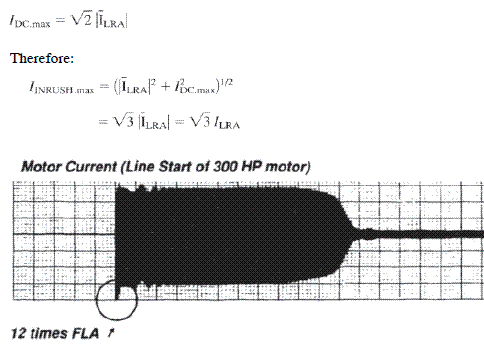- This topic has 1 reply, 1 voice, and was last updated 2 years, 11 months ago by .
-
Topic
-
I know locked rotor current, of an induction motor, how can be calculated/chosen the suitable setting current of 50 (instantaneous over current ANSI code) of specified motor protective relay?
I know locked rotor current, of an induction motor, how can be calculated/chosen the suitable setting current of 50 (instantaneous over current ANSI code) of specified motor protective relay?
Viewing 1 replies (of 1 total)
Viewing 1 replies (of 1 total)
- You must be logged in to reply to this topic.

 There are other factors to be considered that can cause higher levels of transient inrush current. In above Eq. , Vt is normally assumed to be 100% voltage. It can be substantially less when starting a large induction motor across-the-line on a heavily loaded auxiliary electrical supply network. On the other hand, it can be as high as 110% voltage when starting a small induction motor on a lightly loaded electrical auxiliary network. Therefore:
There are other factors to be considered that can cause higher levels of transient inrush current. In above Eq. , Vt is normally assumed to be 100% voltage. It can be substantially less when starting a large induction motor across-the-line on a heavily loaded auxiliary electrical supply network. On the other hand, it can be as high as 110% voltage when starting a small induction motor on a lightly loaded electrical auxiliary network. Therefore:  The
The